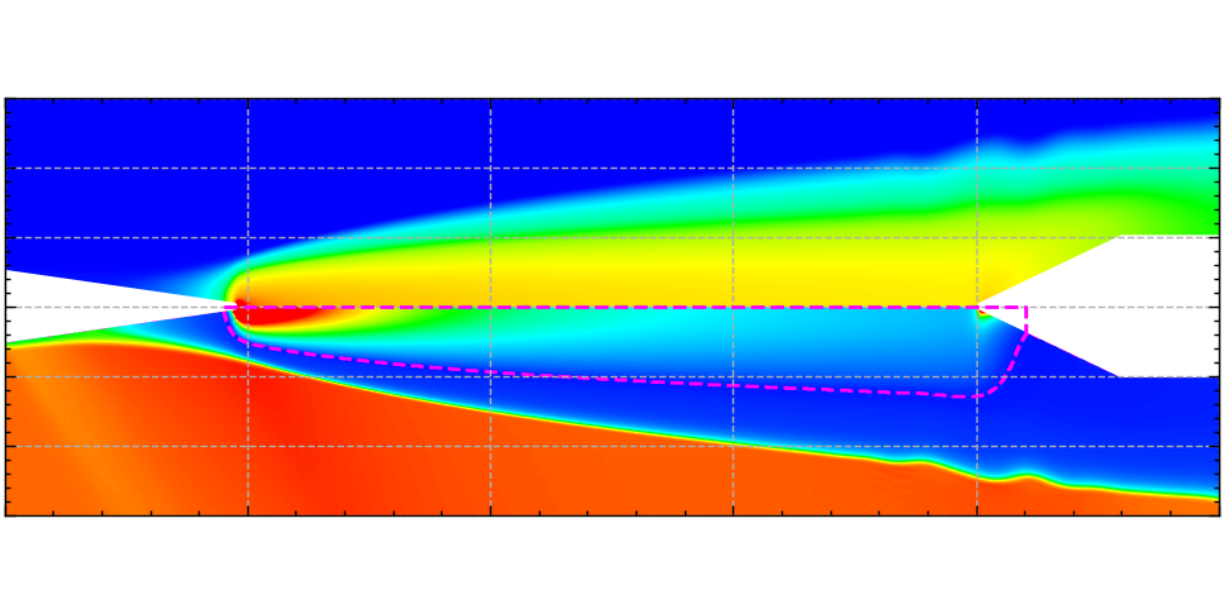This work focuses on detailed descriptions of DC discharge properties in supersonic airflow and its applicability in combustion simulations.
Due to the complexity of obtaining most of the data in the experiment, our experimental research was supplemented by a numerical simulation. Two packages, i.e., FlowVision (fast commercial CFD for 3D engineering) and Plasmaero (2D scientific code developed in JIHT RAS for MHD tasks), were used for modeling the arc DC discharge in a supersonic flow at Mach (M) = 2. Both will be considered for further use in plasma-assisted combustion modeling, so it is important to validate both codes using experimental data from the model configuration with discharge. Axisymmetric geometries of experiments with two coaxial electrodes located parallel to the flow were chosen to avoid the appearance of the current channel part perpendicular to the flow and the corresponding discharge pulsations. Such geometries allow performing numerical simulations in 2D formulation, making it possible to compare the results obtained in the experiments and calculations. As a result of this work, two-dimensional distributions involving temperature, current density, chemical composition, and other discharge and flow parameters were obtained for arc DC discharges 0.5–7 A in a supersonic flow (Pst = 22 kPa, T = 170 K, V~500 m/s). Good qualitative agreement between experimental and numerical results was achieved. The production of a significant amount of atomic oxygen, which accelerates combustion, was noted.
Firsov, A., Bityurin, V., Tarasov, D., Dobrovolskaya, A., Troshkin, R.; Bocharov, A. Longitudinal DC Discharge in a Supersonic Flow: Numerical Simulation and Experiment. // Energies 2022, 15, 7015
Download PDF 5,43MB
© 2022 by the authors. Licensee MDPI, Basel, Switzerland. This article is an open access article distributed under the terms and conditions of the Creative Commons Attribution (CC BY) license (https://creativecommons.org/licenses/by/4.0/).
